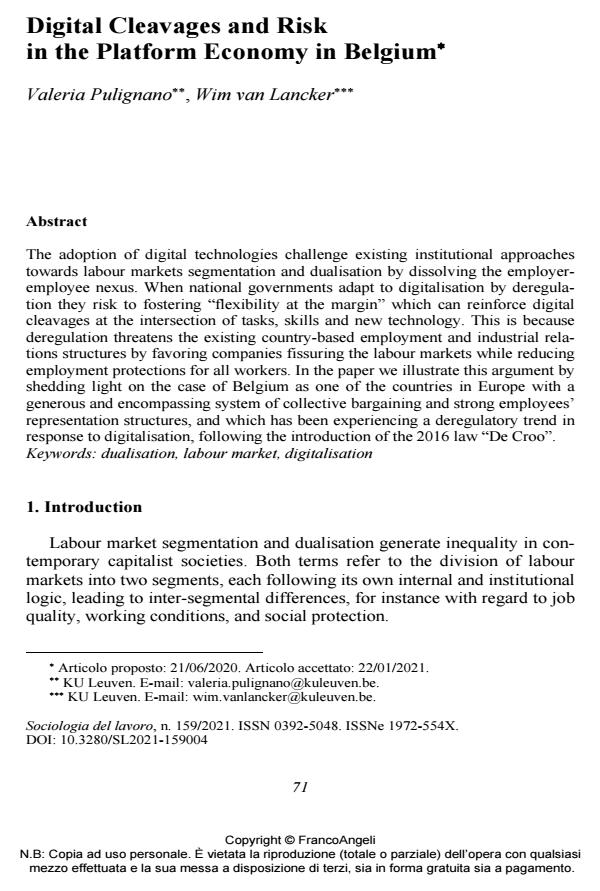Digital Cleavages and Risk in the Platform Economy in Belgium
Journal title SOCIOLOGIA DEL LAVORO
Author/s Valeria Pulignano, Wim van Lancker
Publishing Year 2021 Issue 2021/159
Language English Pages 18 P. 71-88 File size 225 KB
DOI 10.3280/SL2021-159004
DOI is like a bar code for intellectual property: to have more infomation
click here
Below, you can see the article first page
If you want to buy this article in PDF format, you can do it, following the instructions to buy download credits

FrancoAngeli is member of Publishers International Linking Association, Inc (PILA), a not-for-profit association which run the CrossRef service enabling links to and from online scholarly content.
The adoption of digital technologies challenge existing institutional approaches towards labour markets segmentation and dualisation by dissolving the employer-employee nexus. When national governments adapt to digitalisation by deregula-tion they risk to fostering "flexibility at the margin" which can reinforce digital cleavages at the intersection of tasks, skills and new technology. This is because deregulation threatens the existing country-based employment and industrial rela-tions structures by favoring companies fissuring the labour markets while reducing employment protections for all workers. In the paper we illustrate this argument by shedding light on the case of Belgium as one of the countries in Europe with a gen-erous and encompassing system of collective bargaining and strong employees’ representation structures, and which has been experiencing a deregulatory trend in response to digitalisation, following the introduction of the 2016 law "De Croo".
Keywords: Dualisation, labour market, digitalisation
- Digital labour and welfare regimes: The impact of the institutional context on the prevalence of platform work Wouter Zwysen, Bianca Luna Fabris, in Competition & Change 10245294251349484/2025
DOI: 10.1177/10245294251349484 - Digital work across the divide: Japan’s platform economy and labour market dualisation Deborah Giustini, in Contemporary Japan /2025 pp.3
DOI: 10.1080/18692729.2023.2206339
Valeria Pulignano, Wim van Lancker, Digital Cleavages and Risk in the Platform Economy in Belgium in "SOCIOLOGIA DEL LAVORO " 159/2021, pp 71-88, DOI: 10.3280/SL2021-159004